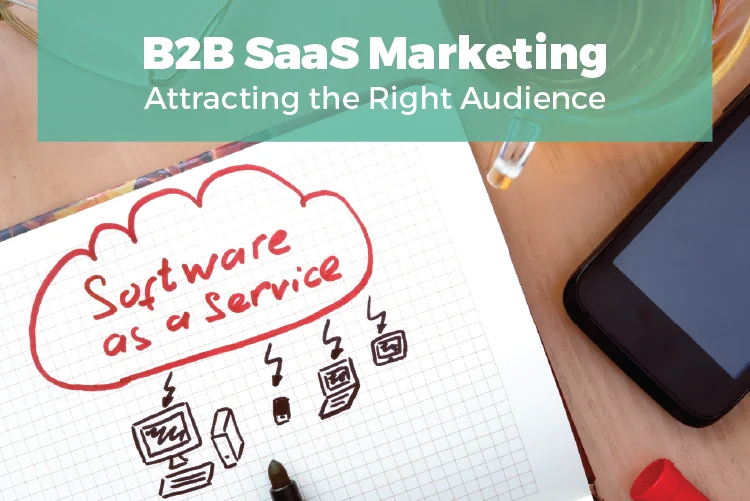
B2B SaaS Marketing—Attracting the Right Audience

As you build your B2B SaaS marketing efforts, you’ll attract a larger audience: they’ll follow you, like your Facebook page, subscribe to your blog, opt into your newsletter and more. But how do you know if that audience is the one you want?
Many of us have experienced times when our content attracts fans instead of prospects or attracts people in the same industry as us instead of people in the industry we want to work with. Don’t worry—getting out of that rut is easy; follow the tips below to attract the audience you want.
Understand who your ideal audience is.
Who are you selling to? Who buys your product? Who do you want to buy your product? These questions are a start to understanding your ideal audience but don’t stop there. Think of that group of people you sell to as a whole and break them down into different buyer personas.
Per HubSpot, a buyer persona is a semi-fictional representation of your ideal customer based on real data and some select educated speculation about customer demographics, behavior patterns, motivations and goals.
Don’t simplify a persona down to their role; try to understand their daily challenges and goals. You should do research for each persona—don’t guess at what they want.
Here’s a tip: Interview current clients to discover their goals and motivations. This is also a great opportunity to ask them how your product makes it easier to do their job. Similarly, ask prospects how they think your product will positively impact them. Then apply this information to your personas.
Create targeted content.
Once you understand who your personas are you should create content for each persona. Try not to write general content—writing content for “everyone” ends up attracting no one. Instead, do the following:
- Answer the questions your target audience is asking.
- Solve the challenges your target audience experiences.
- Help your target audience achieve their goals.
Writing content that accomplishes these goals attracts the audience you want. For example, if you own or work at a cloud storage business, you probably work with companies that are challenged with finding providers who have quick and easy data transfer. Creating content that speaks to that challenge and shares solutions that your own product provides (integrations, in-house data transfer) will attract and convert the audience that needs help with these issues.
Meet your ideal audience where they are.
This will vary depending on your ideal audience but think about the personas you’ve created and the demographics and interests of those personas.
Are you working with startups? Attend startup networking events (there are many of them, especially in Accelity’s backyard, Milwaukee).
Are you targeting people at a business who fall into the 18-40 age range? Connect with them online, especially on social platforms like Twitter, LinkedIn and Instagram.
Here’s an example: A past colleague of mine created an app that appealed mainly to high school and college students. He and his partner attended football and basketball games, where there was a lot of foot traffic, and handed out free “swag” (sunglasses, bracelets, etc.). They took this opportunity to talk to students about the app for 10-15 seconds. Instead of just hoping that their app would catch on, they physically went where their target audience was and tried to engage them there.
Learn the lingo.
When you know how to “speak the lingo,” it can be a sign that you are a part of the crowd or industry. People who don’t know the common vernacular of a group can easily be shut out.
Here’s an example: I previously worked at a B2B SaaS company in sales and talked to people in the financial industry. When I started the job, I referred to each prospect as a “financial advisor.” After six months, I learned that only a few people actually identified themselves as “advisors,” even if they are. That means I was speaking incorrect lingo for six months and after I adjusted my language, I had more successful conversations.
If you want to attract the right audience, know what they are talking about and how they are talking about it. This could mean:
- Going to a networking event and listening to how people communicate
- Chatting with a few of your customers to get an idea of the way they talk about their industry
- Going on Twitter just to read tweets and conversations of the people in the industries we’d like to work with
Ultimately, it is impossible to learn industry communication in one day, but if you study terminology and listen to the way your ideal clients talk, you’ll end up with better quality marketing materials and conversations.
It’s time to start attracting the right audience! What strategies do you use to attract the right audience? Let us know in the comments below.
Subscribe to our newsletter
Curated content, news articles, team updates and more.



